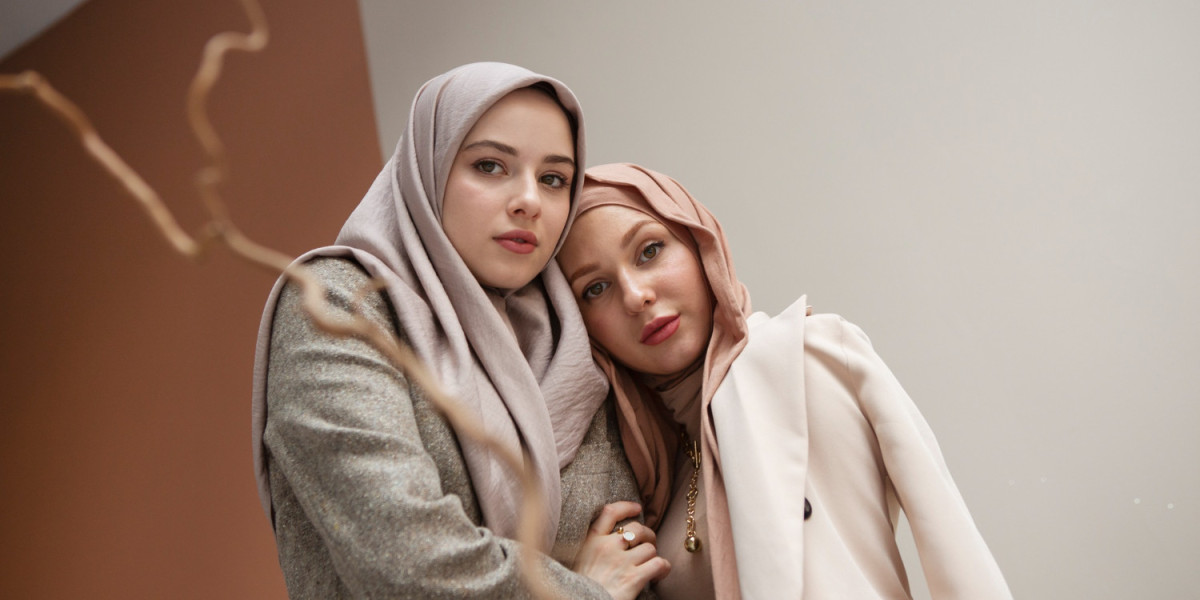Introduction:
Hijab, jilbab, and niqab are garments worn by Muslim women as part of their modest attire, each with its own unique style and purpose. In this article, we delve into the differences between these garments and provide insights into where to buy scarves for women, offering a comprehensive guide to understanding Islamic modest fashion.
1. Hijab:
The hijab refers to a headscarf worn by Muslim women to cover their hair and neck while leaving the face visible. It is a symbol of modesty and is commonly worn as a cultural or religious practice. Hijabs come in various styles, including square, rectangular, and wrap-around, and are available in a wide range of fabrics, colors, and patterns.
2. Jilbab:
A jilbab is a loose-fitting outer garment worn by Muslim women to cover the entire body except for the face, hands, and feet. It is typically a long robe or coat-like garment that extends from the shoulders to the ankles and is often worn over regular clothing. Jilbabs are commonly worn for modesty and are available in different styles, including plain, embroidered, and embellished designs.
3. Niqab:
The niqab is a face veil worn by some Muslim women to cover the face while leaving the eyes exposed. It is typically worn in addition to a hijab or jilbab and is considered a more conservative form of modest attire. Niqabs come in various styles, including full-face veils that cover the entire face and partial veils that cover the lower half of the face.
Where to Buy Scarves for Women:
1. Online Retailers:
Many online retailers specialize in selling scarves for women, offering a wide range of styles, colors, and fabrics to choose from. Popular online platforms like Amazon, eBay, and Etsy feature a diverse selection of scarves from various brands and designers, making it easy to find the perfect scarf to suit your preferences.
2. Specialty Boutiques:
Specialty boutiques and stores that cater to modest fashion often carry a curated collection of scarves for women. These boutique shops may offer unique designs, premium fabrics, and personalized styling services, allowing you to find a scarf that reflects your individual style and modesty preferences.
3. Local Markets:
Local markets and bazaars are great places to discover handmade scarves and support local artisans. Many vendors sell a variety of scarves in different styles and colors, providing an opportunity to explore traditional and cultural designs while enjoying the vibrant atmosphere of the market.
FAQs (Frequently Asked Questions):
Q: What is the difference between hijab, jilbab, and niqab?
A: The hijab is a headscarf that covers the hair and neck, leaving the face visible. A jilbab is a loose-fitting outer garment that covers the entire body except for the face, hands, and feet. The niqab is a face veil that covers the face while leaving the eyes exposed, worn in addition to a hijab or jilbab.
Q: Where can I buy scarves for women?
A: Scarves for women can be purchased from online retailers, specialty boutiques, and local markets, offering a wide range of styles, colors, and fabrics to choose from.
Q: Are there specific styles of hijab, jilbab, and niqab?
A: Yes, hijabs, jilbabs, and niqabs come in various styles, including different shapes, lengths, and designs, allowing women to express their modesty in accordance with their cultural and personal preferences.
Conclusion:
Understanding the differences between hijab, jilbab, and niqab is essential for appreciating the diversity of Islamic modest fashion. While hijab covers the hair and neck, jilbab offers full-body coverage, and niqab provides additional face veiling. Knowing where to buy scarves for women enables individuals to explore a variety of styles and express their modesty in ways that resonate with their cultural and personal beliefs.








